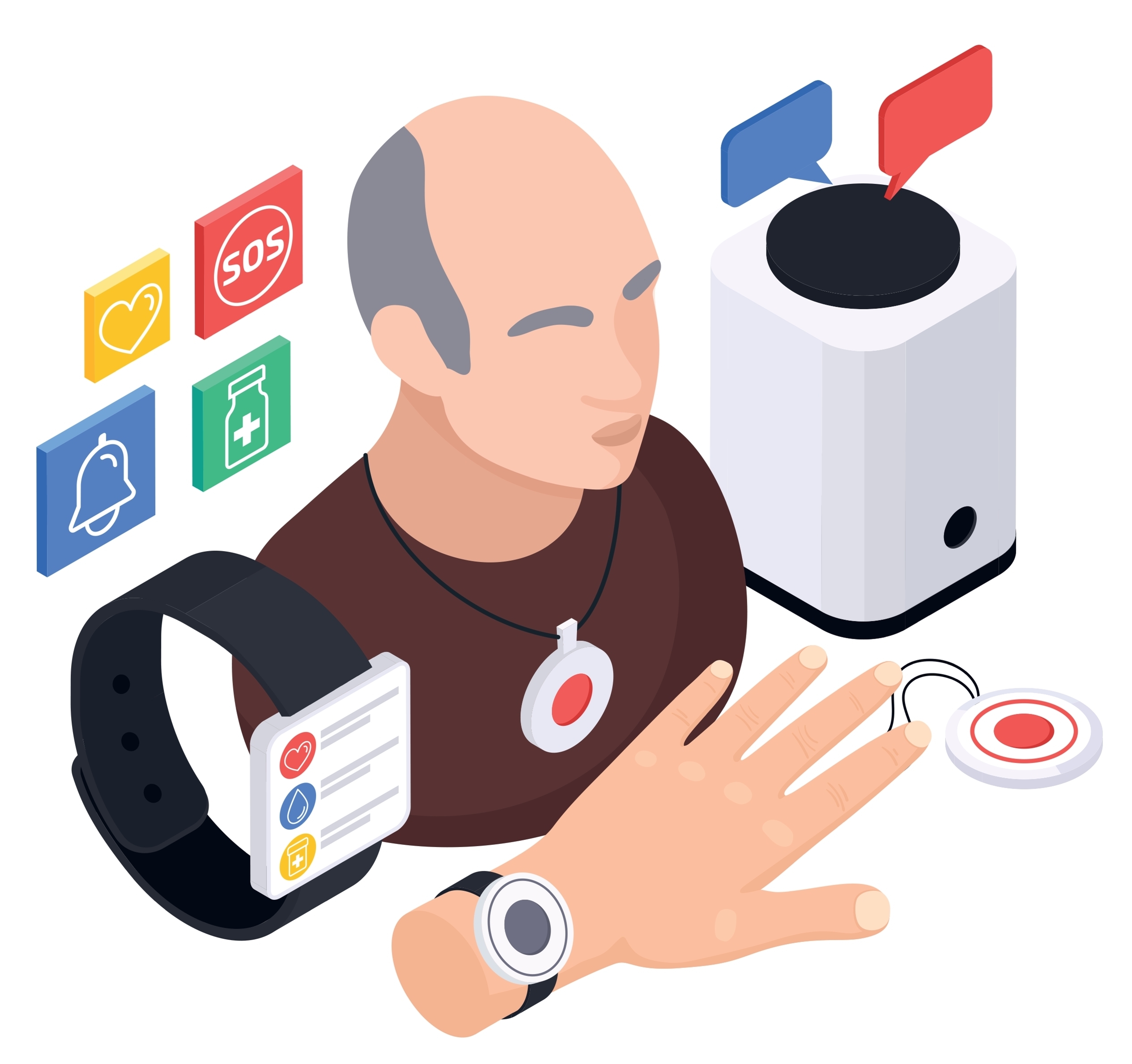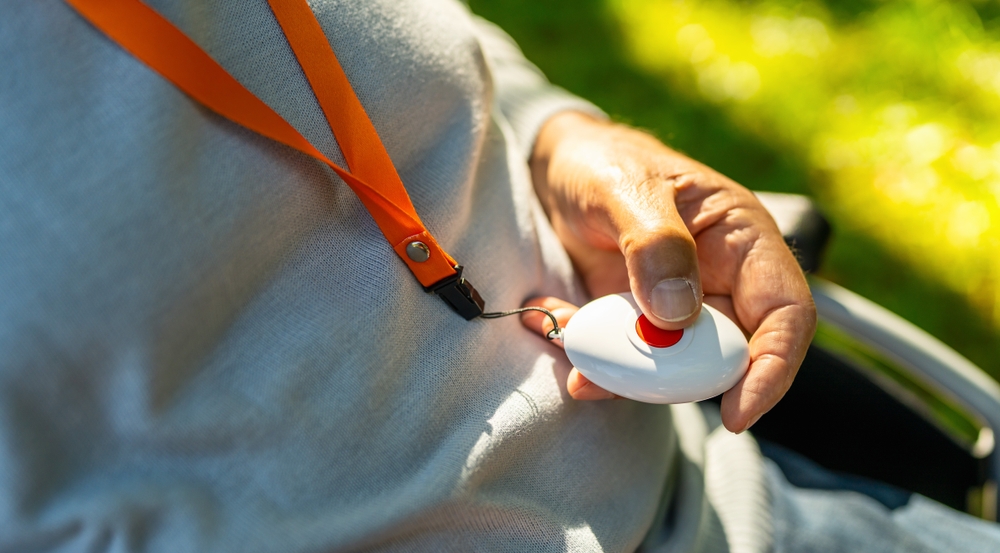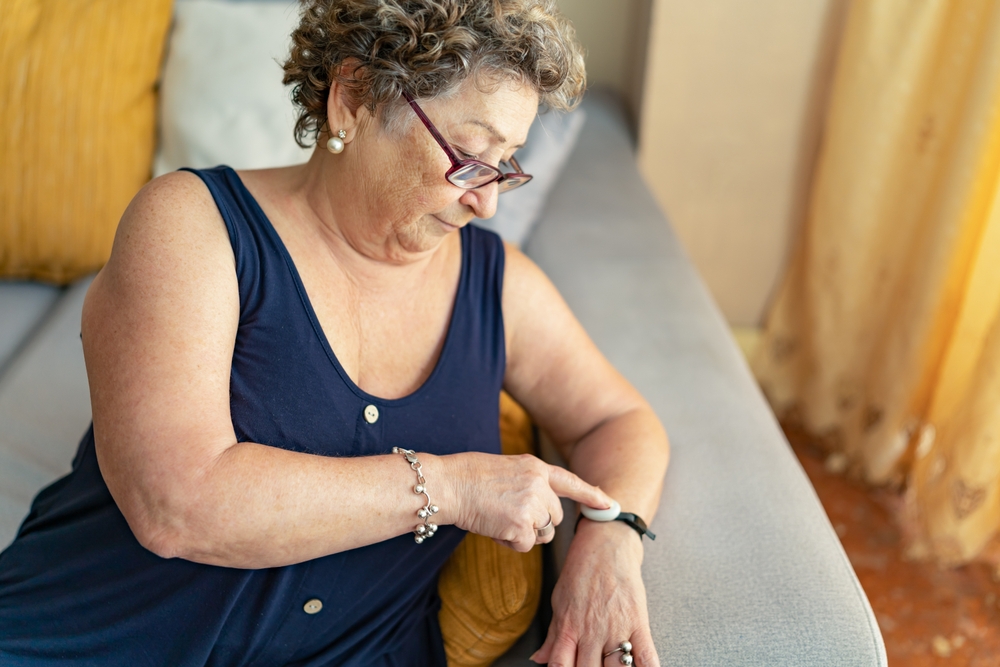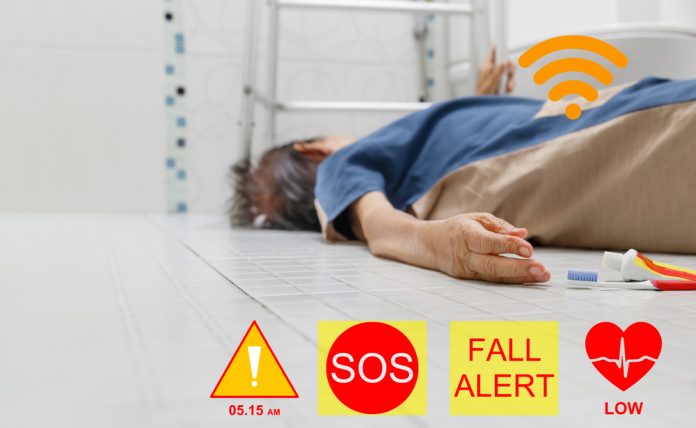Living in fear of falling is a harsh reality, especially if you live independently. Imagine the fear of spending agonisingly long hours on the floor, either unconscious or desperately hoping someone comes to your rescue. Not receiving help within an hour of falling could lead to increased dehydration and pressure sores, not to mention a heightened sense of helplessness.
This fear escalates if you have hearing and vision impairments, type 2 diabetes, or run the risk of having a heart attack or stroke. These complications can lead to dire consequences that could be fatal if not addressed promptly.
Research shows that one out of three people over 65 in India falls at least once every year. These falls range from mild to severe, with 1.5 to two million older adults suffering injuries and 1 million even losing their lives.
A medical alert system could be a lifesaver (in the literal sense) and essential to thrive in the era of independent living. Although these devices aren’t commonly used in India, many emerging startups are beginning to offer them in the market. Let’s understand what these devices are and how they work to bring you peace of mind during untoward incidents like falls.
What are medical alert devices, and why are they handy for seniors?
Medical alert devices help people in emergencies by connecting them to an emergency response centre or loved ones. Imagine these two scenarios when you’re home alone, and your mobile phone is not on you:
In the first, you slip in the hallway, and the pain is so excruciating that getting up seems impossible. Lying motionless, you’re unsure how to get help, hoping for a miracle.
In the second scenario, you slip in the hallway, but remember you’re wearing your medical alert device around your neck. You reach for it, press the button, and within seconds, your daughter receives a notification on her phone app, alerting her of the fall. You know she’ll be on her way home right away. You thank God for small blessings.
Medical alert devices are a godsend for older adults who live alone, empowering them to live independently without the need for round-the-clock caregivers or nursing homes. Commonly known as fall monitors, health monitors, medical emergency response centres, and personal emergency response centres, these devices also benefit patients or anyone else seeking medical emergency assistance.

Features of medical alert devices
Medical alert devices come with various standard and add-on features, so check with the provider to see if they meet your needs before purchasing. Here are some crucial ones to look for:
Waterproof buttons
Most slips and accidents occur in the shower, making it essential to opt for medical alert devices you can wear while bathing. While water-resistant buttons can handle a few splashes, waterproof buttons alert emergency contacts even when fully submerged in water.
Fall detection
Pushing a button to summon help after a fall requires you to be conscious and capable of reaching the button, usually worn around your wrist or neck.
But what if you’re not conscious or can’t reach it? Opt for a device with fall detection technology that immediately recognises falls and alerts the response centre or family members for timely medical attention. However, repeated false alerts are a common occurrence, which could be a nuisance for you and the people on the receiving end. That’s why you should check out user reviews on the provider’s reliability before narrowing in on a choice.
On-the-go and at-home coverage
Premium medical alert devices provide at-home and on-the-go coverage for prompt access to help wherever you may be. Home systems typically cover 600 to 1,400 feet, while the on-the-go system offers wider coverage and GPS tracking, but may require a SIM card.
Mobile app integration
Mobile applications enable caregivers or family members to track your location and monitor profiles. This feature is handy for older adult patients with dementia, as they can easily call for help by pressing the medical alert button if they lose their way.
Additionally, the app acts as a one-stop shop, allowing users to upgrade and renew plans that instantly register with customer service and the resource centre.

How exactly do medical alert devices work?
Medical alert systems have three crucial parts: a help button (and false detection technology), a communication device, and an emergency response centre.
- Help Button and Fall Detection Technology: Worn as a necklace or bracelet, the help button offers peace of mind, knowing that assistance is just a button press away. A medical alert device triggers an alert by manually pressing the button or through automatic fall detection technology, or both.
- Communication Device: Once the help button is activated, the communication device placed in your home connects you to the response centre. You’ll hear the response team’s voice through this device within moments, ready to assist.
- Emergency Response Center: The response team assesses the situation and sends help from the nearest healthcare facility or notifies your emergency contacts.
However, medical alert devices in India miss out on dedicated response teams. Instead, the provider directly alerts emergency contacts or loved ones via mobile apps to arrange for medical supervision.

Different types of medical alert systems
Monitored vs. Unmonitored
A monitored medical alert system sends an alert to a 24/7 response team each time you press the help button and comes with an added fee to avail of this service. However, these aren’t commonly found in India because the concept of an active response team isn’t currently underway (except for government response teams).
In contrast, unmonitored medical alert systems are more wallet-friendly and connect you with family members or emergency services directly without the intervention of a response centre. Most medical alert systems in India are unmonitored.
Home-based vs. Mobile systems
Calling for help when you’re at home alone is ultra-convenient with a medical alert device, but what if you want to extend this care outside your house?
When you head out on week-long vacations or make short trips to the local market, a mobile medical alert system’s long-range functionality lets you rest easy, knowing help is nearby. They also boast an in-built GPS to pinpoint your exact location when you press the button. However, these devices require regular battery charges and rely on cellular technology, so there’s the added cost of purchasing a SIM card.
Confidence and Reassurance With Every Step
A medical alert device is your safety net, giving you the confidence to live independently. Take proactive steps to Invest in your life today instead of waiting for emergencies to consider your options.
The reassurance of knowing your loved ones are always within reach through medical alert technology offers a sense of security like no other.



